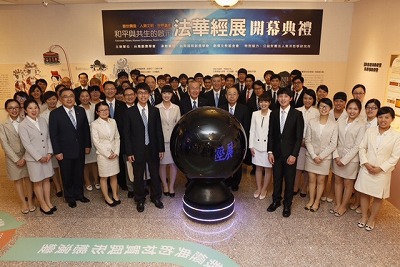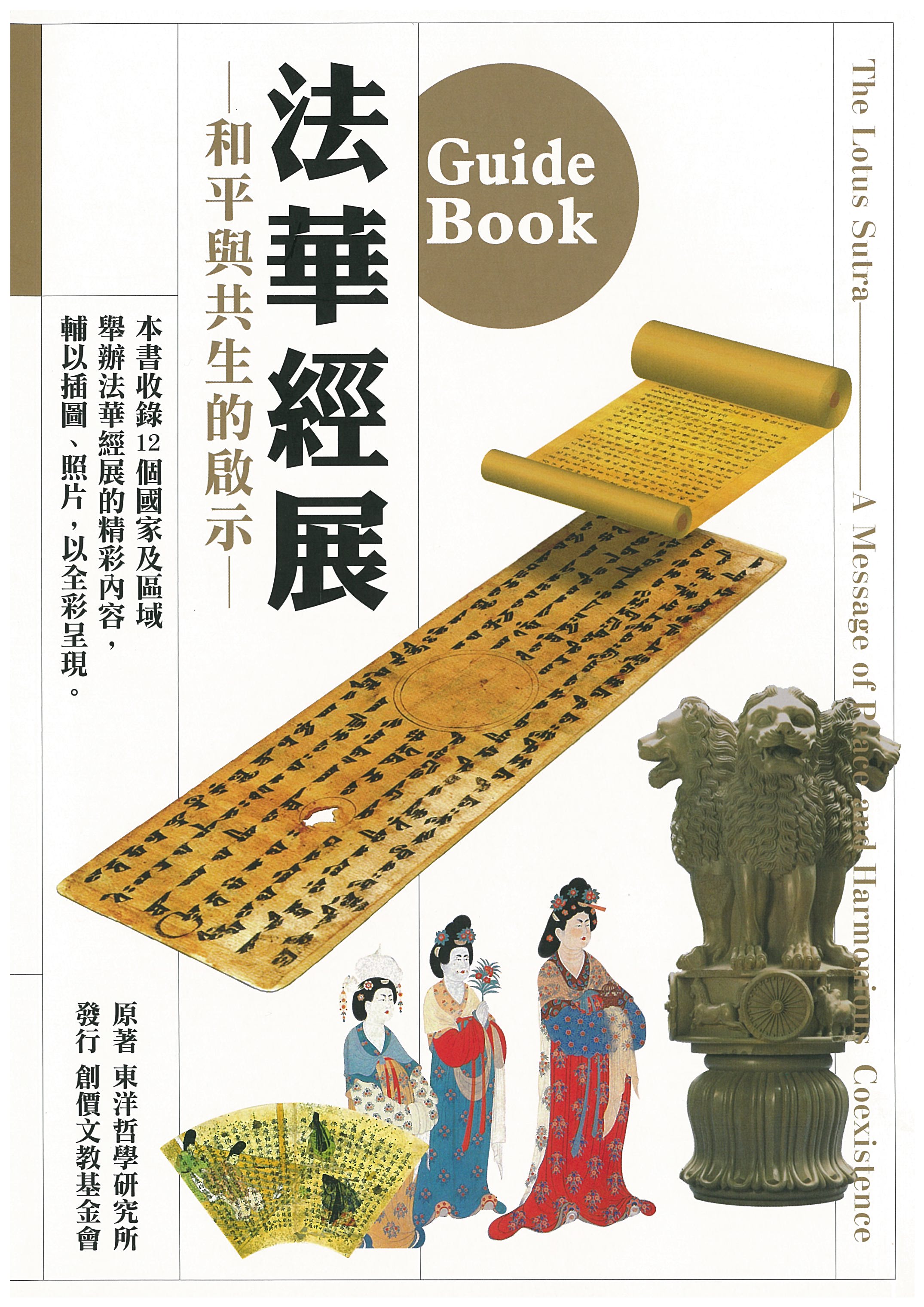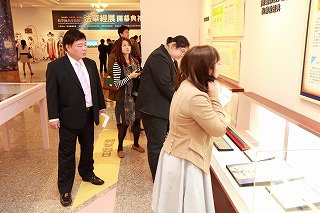

 
|
Second Lotus Sutra Exhibition Held in Taiwan
 On
January 25, 2015, the “The Lotus Sutra--A Message of Peace and
Harmonious Coexistence” exhibition was opened in Taiwan for the second
time at Changhua Culture Center of Taiwan Soka Association. The first exhibition was
held at Zhi Shan Culture Center in Taipei in 2013. On
January 25, 2015, the “The Lotus Sutra--A Message of Peace and
Harmonious Coexistence” exhibition was opened in Taiwan for the second
time at Changhua Culture Center of Taiwan Soka Association. The first exhibition was
held at Zhi Shan Culture Center in Taipei in 2013.
On display were photographic panels of the renowned Dunhuang Murals and
other pieces including reproductions of Lotus Sutra manuscripts in
various languages and of the Soka Gakkai Lotus Sutra Manuscript Series.
To coincide with the opening of the exhibition, the Traditional Chinese
language edition of Guidebook: "The Lotus Sutra–A Message of Peace and
Harmonious Coexistence" Exhibition (translated and edited by Chin-Shuan
Cultural and Educational Foundation) was published on January 26.
The exhibition will continue through April 10, 2015. It is scheduled to
travel to Fongshan Cultural Center in Kaohsiung City, and Taoyuan
Culture Center in Taoyuan City.
Organizers:
The Institute of Oriental Philosophy (IOP)
Venue: Changhua Culture Center, Taiwan Soka Association
Date: January 25-April 19, 2015
|
-------------------------------------------------------------------------------------------------------------------------------
 Published in January, 2015
Published in January, 2015
Translated and edited by Chin-Shuan Cultural and Educational Foundation (Taiwan)
The Traditional Chinese language edition of Guidebook: "The Lotus
Sutra–A Message of Peace and Harmonious Coexistence" Exhibition was
published in January, 2015. The exhibition itself was organized by the
Institute of Oriental Philosophy. The guidebook, all of which is
printed in color, introduces the contents of the exhibition. The
Chinese edition was translated and edited by the Chin-Shuan Cultural
and Educational Foundation.
The contents of the guidebook include a history of the transmission of
the Lotus Sutra, manuscripts translated into various languages, as well
as the Soka Gakkai Lotus Sutra Manuscript Series and Buddhist works of
art. Traditional Chinese is used in Taiwan and many other regions of
the world, thus the publication of the Traditional Chinese edition has
great significance in widely disseminating the empowering messages of
the Lotus Sutra.
In his congratulatory message, Baoyao Lin, honorary professor at the National Taiwan Universit y
of Arts remarked, “Holding the serialized exhibition displaying
Buddhist scriptures is an extremely rare attempt, and it is an
unparalleled opportunity to see archeological findings, formative arts,
and copies of wall paintings and original manuscripts.” He added,
“These World Heritages are highly academic, thus it may be difficult
for the general public to understand the contents. The panels, however,
explain the contents well and invite viewers to Buddhist sutras and the
world of thoughts and faith in the Lotus Sutra.” He also commented on
the Lotus Sutra Series and noted, “Publishing the facsimile and
romanized editions of the Central Asian Nepalese and Gilgit manuscript
is a truly remarkable cultural, human, and civilizational undertaking.” y
of Arts remarked, “Holding the serialized exhibition displaying
Buddhist scriptures is an extremely rare attempt, and it is an
unparalleled opportunity to see archeological findings, formative arts,
and copies of wall paintings and original manuscripts.” He added,
“These World Heritages are highly academic, thus it may be difficult
for the general public to understand the contents. The panels, however,
explain the contents well and invite viewers to Buddhist sutras and the
world of thoughts and faith in the Lotus Sutra.” He also commented on
the Lotus Sutra Series and noted, “Publishing the facsimile and
romanized editions of the Central Asian Nepalese and Gilgit manuscript
is a truly remarkable cultural, human, and civilizational undertaking.”
|











